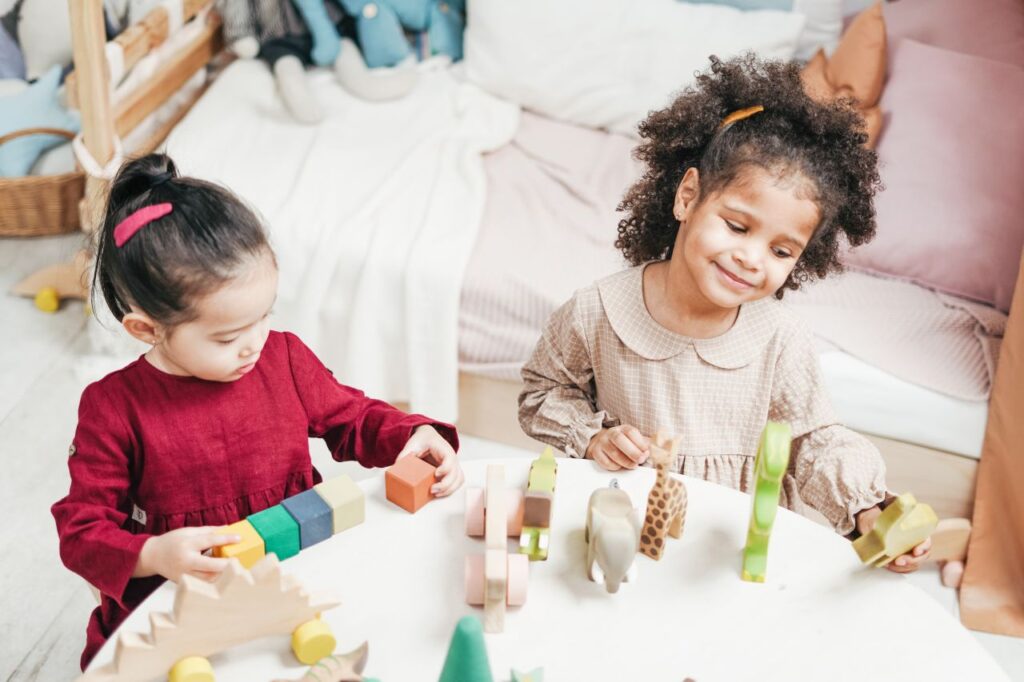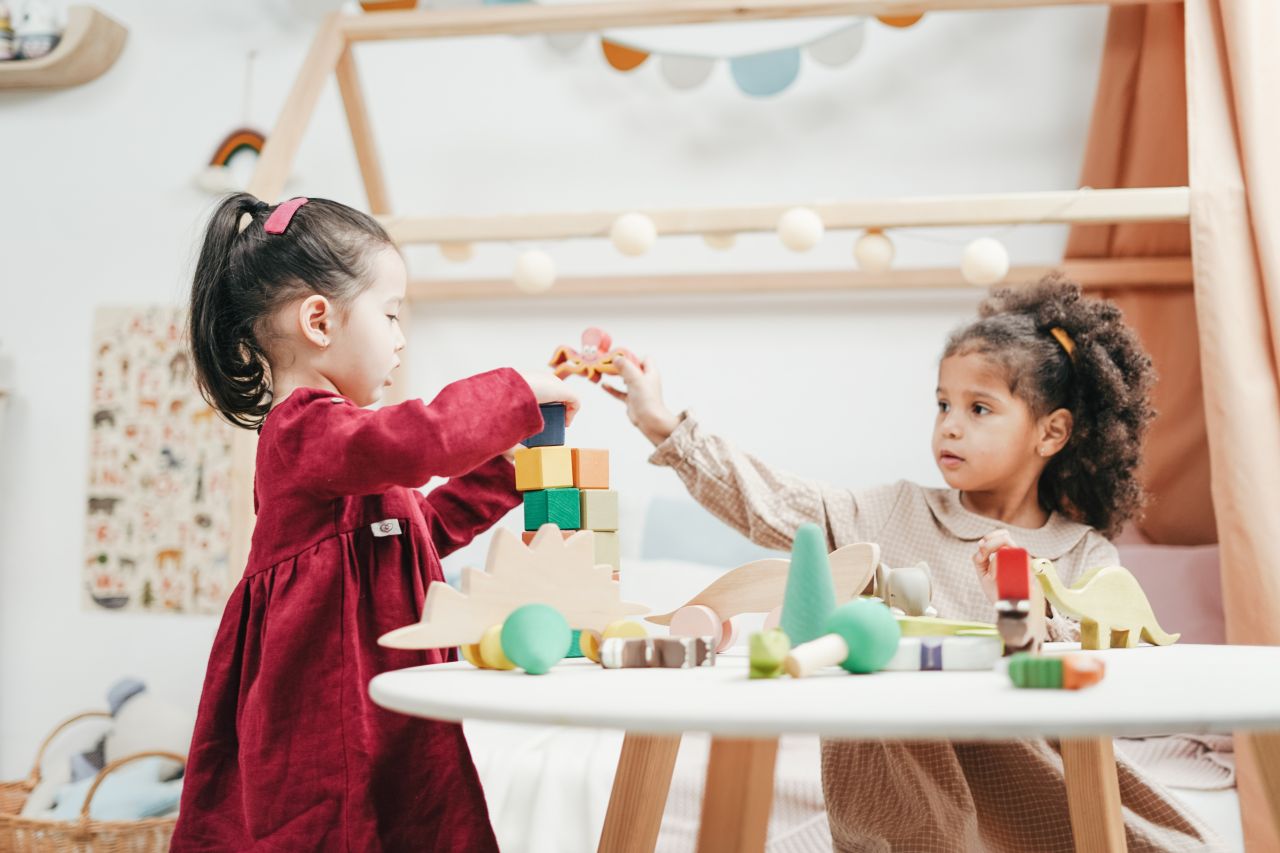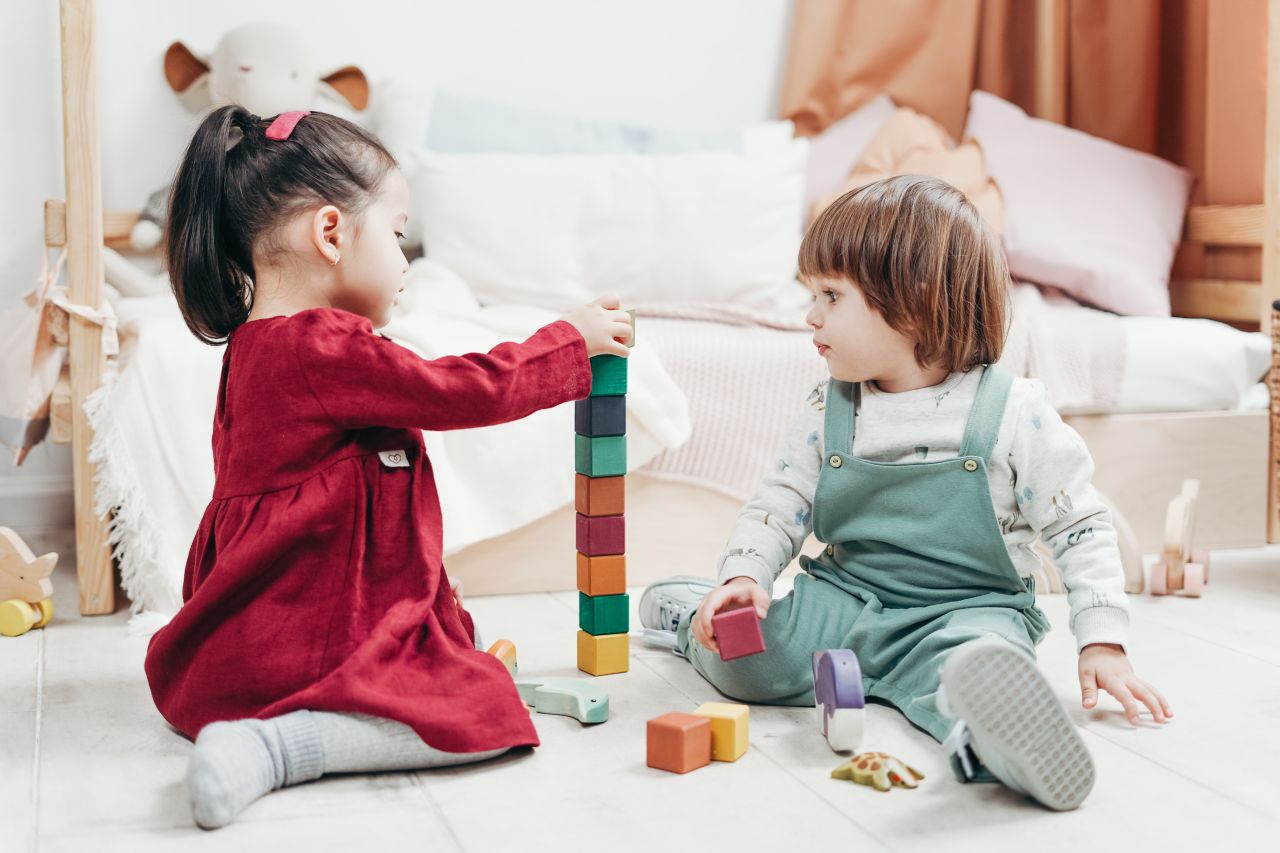Think about the last time you had to do something tedious and time-consuming, like writing a long email or filling out a form. How did you feel when you were finished? Chances are, you were relieved that it was over and that you could finally move on to something more enjoyable. Now think about how that experience would be different if your hand muscles were weak and had poor coordination.
It's not hard to imagine how frustrating it would be to struggle endlessly with even the simplest tasks. That's why fine motor skills are so important – they make everyday activities easier and less frustrating. Keep reading for more information on the benefits of fine motor skills!
Benefits Of Fine Motor Skills
Independence
It is number one for a reason.
Independence is a core skill in life. It is the power behind creating goals, taking on challenges, and being empowered to give them a go. The seeds for all of these things are being sown more or less from birth.
The more children feel power over their surroundings, the more they grow confident.
Fine motor is important for this. In addition, it helps to do many important jobs for themselves, such as trying to get dressed being one example.
Also, they can overcome the many obstacles that come their way that involve fine motor, such as turning a door handle. Finally, when they rely on adults less, they get more self-assured.
Able To Get Dressed
It is one of the central skills of early childhood. All educators understand and have witnessed the impact of parents encouraging children to dress independently.
Dressing by themselves is a state of mind for many children. They are often more independent and keen to explore and try things independently if they do this.
Start small with this.
Babies and toddlers will need to be dressed by parents. But as soon as children can start helping somehow, they should be encouraged.
To start with, this will be things like putting their arms up to take a jumper off. Or sitting down to have their shoes on.
But this will expand with encouragement to put on a few clothes, and finally select and put on clothes themselves.
There is a huge amount of finger strength and fine motor development during the dressing process. In addition, there is twisting, lifting, zipping, buttoning, and all sorts of manipulative skills.
Hand-Eye Coordination
Another fine motor skill develops from babies and keeps developing to adulthood.
When children interact with fine motor games and activities, they continually improve the link between what their eyes see and what they try to hold and touch.
Helps Them Eat
One of the primary benefits of fine motor is eating more independently and successfully.
Fine motor is beginning from about three months old, and eating is one of the central areas required for fine motor development.
The more independence you can give to young eaters, the better. Let them explore their food. Let them put it into their mouths at whatever stage they can do that.
Later on, giving them some small things to pick up, such as peas or rice, really helps their fine motor skills.
There are a lot more fine motor skills involved in eating in general. For example, both the action of the tongue and the lips are fine motor movements. Developing these crucial small muscles will help them eat food successfully and are also linked to speaking.
Children with speech and language issues will often also have problems eating. There is also a correlation between speech issues and poor fine motor in the hands and fingers (though not always). It is surprising how linked together things like this are.
Top Tip – Allow children as much independence as possible in the ear
Boosts Self Esteem
Fine motor helps children to be aware of their abilities.
Children are acutely aware of this when carrying out a tricky task independently.
For example, children are delighted to make a tall tower out of building blocks. Likewise, they are ecstatic when they fill a geoboard with elastic bands.
Top Tip: Celebrate their achievements!
Speech And Language
Speech and language are powerfully linked to fine motor skills. There is a lot of research that demonstrates the key link between communication and fine motor development (Source)
Many children who present with fine motor issues of the fingers in skills like writing will often have speech and language issues.
Many speech and language activities are trying to develop the fine motor muscles in the face, lips and tongue.
By speaking more clearly, children will, of course, be understood better. They will also often develop more confidence and self-esteem.
Top Tip: Sing songs, read books, and engage in plenty of face-to-face talking with young children.
Turn Pages Of Book
Reading is not associated with fine motor much, but the physical act of turning the pages of a book is a fine motor activity.
The more that children feel confident and secure with books, the better, and so this simple fine motor level of ability can help them not to be put off by not being able to turn the pages.
Top Tip: Seeing the act of reading done regularly, alongside giving children access to books they can use independently, will help develop this sense of independence in handling books.
Social Boost
Fine motor skills can help make children feel more connected to their friends.
If your friends are all trying out a threading activity with beads, and you can do it as well, it gives you a sense of community. But unfortunately, children with weaker fine motor skills will often refuse or belittle activities like this if they know they can't do them, impacting their relationship with others.
Children with good fine motor skills will be able to engage in the same activities their friends do fully and on an equal footing, positively impacting themselves and their relationships.
Top Tip: Try and offer a range of tools in different learning areas and for different activities. It will help children at different stages of fine motor development to access the same activities at different levels.
Helps Them Draw
The ability to draw is connected to several functions, but the primary one is the fine motor.
Drawing helps children to recreate the world and their lives. They develop their understanding of the physical forms of things. Also, they like to draw pictures from stories and talk about them.
The fine motor helps their drawings take on a greater resemblance to reality. They can add detail and talk more about what they are doing and its implications.
Top Tip: Provide exciting surfaces and equipment to draw with.
Use Technology
Many children will be much more confident at using different types of technology if they have effective fine motor skills.
For example, using a mouse requires coordination and control in the fingers, hand and wrist.
Computer games often require a level of fine motor. Also, i-pads and tablets need some hand-eye coordination to work effectively.
Of course, technology is a double-edged sword where the fine motor is concerned.
Many researchers and educators believe that current low levels of fine motor skills amongst children are often caused by excessive use of technology. This kind of play takes place instead of more traditional forms such as playing outside with digging, sweeping and playing ball games. As a result, children use their hands less than ever before, so keep this in mind.
Top Tip: Introduce a range of technology, but be aware that many children will need other experiences as a much greater priority.
Loose Parts Play
Loose parts play is a fantastic way of providing open-ended learning. It is great for fine motor, and also fine motor helps in being able to access it fully.
Put simple, loose parts is playing with objects with no fixed purpose or goal. For example, playing with some stones. The stones could signify something for the child (such as dogs, sweets, or magic gems), but they have no definite purpose, like a toy car does, for example.
Some of the best loose parts play activities are great when using things like wood slices, screws, gems, pompoms, bottle-tops, and other small things like that, which require a level of fine motor skill to be able to access.
Use A Wider Range Of Equipment
It is a really important one to finish off.
Children who are still developing their fine motor skills are limited to a much smaller selection of equipment than those that are more confident in this area.
For example, to take just one learning – the sand. There might be a range of larger equipment that children with weaker fine motor skills can use, such as gutters, tubes, pipes, spades, buckets, etc.
However, those with increasingly effective fine motor skills will also be able to use small scoops and spoons, small pebbles and shells, small clay knives for wet-sand carving, and other things like mini-moulds.
The range of experiences on offer in many areas will double or more.
Top Tip:W Provide a range of big and small equipment for activities.
Taste
It is another less obvious one – our ability to taste!
We can taste by the ability of our tongues to make many series of small movements to move the food around our mouths.
The more skillfully you can do this process, the better your ability to taste food and greater satisfaction in eating in general. Who'd have thought!?
Top Tip: Talk about food! What it tastes like, and likes and dislikes. The more children think about the process, the better they might focus on the mechanics of eating.
Facial Expressions
Fine motor is involved in so many areas that you probably would never think about!
Here's another one – facial expressions!
All those different ways we can make our faces move are made possible by tiny movements of multiple muscles.
Facial expressions play a huge part in life. Anyone that works with young children will have experienced issues with facial expressions such as:
Some children convey very few facial expressions with their faces
Some are unable to observe facial expressions in others. They don't 'see' it when their friends are upset or shocked sometimes
The good idea is to encourage facial expressions in a range of fun ways. For example, when telling stories, get everyone to act out how characters might look at certain times.
Top Tip: You can play exciting games like 'pass the facial expression' where you quite literally pass a smile or a frown around the circle. Parents can play 'copy my face' – good when you look like characters at different parts of stories you might be reading.
Frequently Asked Questions
Children must develop fine motor coordination to perform basic everyday tasks such as dressing, tying shoe-laces, preparing food, and other self-care tasks. In addition, they need to cut, paste and draw at school, and fine motor skills are essential for learning to write.
Fine motor skills are essential for performing ordinary skills as outlined above and academic skills. Without completing these everyday tasks, a child's self-esteem can suffer, academic performance is compromised, and play options are very limited.
Gross motor and fine motor skills are needed to engage in creative activities such as dance and art. They are also important for health as children need to move to be active. In addition, they are needed for self-care, like going to the toilet independently or getting dressed.
Fine motor skills help children perform important tasks such as feeding themselves, grasping objects and writing. In addition, the ability to accomplish self-care and everyday tasks using fine motor skills help a child's self-esteem and confidence grow.
Fine motor skills are necessary for many aspects of self-care as children, for example: putting on shoes, feeding themselves, cleaning their teeth. Fine motor skills are also critical for the development of emergent writing.
The Importance Of Fine Motor Skill Development
Fine motor skills involve refined small muscles that control the hand, fingers, and thumb. A child can complete important tasks such as writing, feeding oneself, buttoning, and zippering with these skills. These abilities gradually develop through experience and exposure to various toys, materials and even foods.
Fine motor skills involve using the small muscles that control the hand, fingers, and thumb. They help children perform important tasks like feeding themselves, grasping toys, buttoning and zipping clothes, writing, drawing, and more. Completing self-care and everyday tasks helps a child's self-esteem and confidence increase.
It's important to start working with children on building their fine motor skills early on. Fine motor skills will develop and improve as they move through childhood. It just takes the right kind of practice.
Some children may struggle with performing tasks that use their fine motor skills. It can cause them to become frustrated and upset when they can't complete everyday tasks. For example, a child may have difficulty holding scissors and cutting along a dotted line. It could cause them to be frustrated at the task and avoid cutting exercises because they feel it's too difficult.
Why is fine motor skill development important? Little hands need to develop skill and strength. As parents or caregivers, we can help this process by encouraging children to play, explore, and interact with various items. Toys, clothing fasteners, safe scissors and play dough are tactile examples of practises that facilitate fine motor development. Even doing age-appropriate tasks in the kitchen are great ways to help build fine motor skills. These types of "play" activities and manipulation skills will help prepare a child to hold and use a crayon. The ability to do so is the first step in learning to colour, draw and ultimately write.
Here are some activities to try with your child that will help fine motor development:
Tummy Time
Your baby needs time to push up, shift from side to side and eventually swipe at objects in front of her, both on her tummy and when on her back.
Finger Feeding
Let your little one finger feed as much as possible. Picking up food with fingers will help develop a pincer grasp (thumb and first finger together), which is a necessary precursor to holding a crayon.
Play With Small Items
Toddlers should be encouraged to stack blocks string beads, use one piece puzzles and play with pop beads. However, children should not be left alone when playing with beads as they may be a choking hazard.
Play With Play Dough
One of the best ways to build hand strength is to play with play dough, play foam or a similar non-toxic and malleable substance. Think resistance!
Finger Painting
Be sure to encourage finger painting, either with paint, pudding or shaving cream.
Puzzles
Simple puzzles can help children manipulate objects by turning, placing and flipping pieces.
Two-Handed Tasks
Any activity that encourages your child to coordinate both hands together is a great tool for development. An example is rolling a ball of playdough into a long "snake" and then cutting it with a plastic knife.
Buttoning And Tying
Practice buttoning and unbuttoning, zippering, hooking fasteners or tying help build strength and agility. Large child-appropriate practice boards that help facilitate these activities are available in most toy stores.
Practice With Clothes Pins
Have your child hang pictures, colouring pages or clothes on a clothesline with spring-loaded clothespins. This activity builds pincer strength.
Colouring
When your child shows interest in colouring, which is usually around 2 1/2-3 years of age, be sure to provide small crayons that fit her little hands.
Look for opportunities throughout the day for your child to manipulate small items, push and pull with her hands and fingers and practice small movements. Being aware of these opportunities is the first step in helping your child develop fine motor skills. Be sure to ask your child's teacher if there are any areas of concern with your child's fine motor development and ask for suggestions if there are concerns. When delays are significant or impeding your child's ability to perform age-appropriate tasks, an assessment by a pediatric occupational therapist may be necessary.
Conclusion
Fine motor skills are an important part of childhood development because they allow children to develop their motor coordination, increase hand-eye coordination and learn the cause-and-effect relationship between hands and objects. They also help with other physical tasks such as writing or drawing, making it easier for kids in school.


